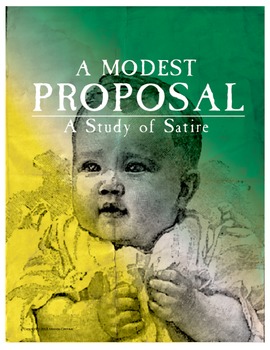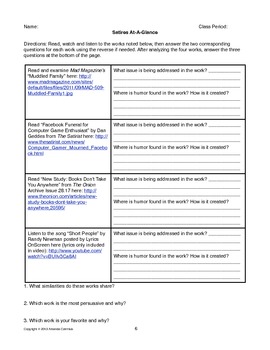"A Modest Proposal": A Study of Satire
- PDF
What educators are saying
Description
This CCSS aligned unit provides an overview, examination and creation of satire using Swift’s "A Modest Proposal" and other resources. Students read and analyze different satires, build their vocabulary, gain historical knowledge, read and analyze "A Modest Proposal", then craft their own satire. For a smaller activity pack about satire *without* “A Modest Proposal”, click here: A Study of Satire. **Please don’t purchase both.**
Includes:
* Satire Overview Handout
* Two Satire Analysis Activities
* "A Modest Proposal" Vocabulary Activity and 10 Question Vocabulary Quiz
* "A Modest Proposal" WebQuest
* "A Modest Proposal" Public Domain Reading
* "A Modest Proposal" 10 Question Reading Quiz
* "A Modest Proposal" Analysis Questions Handout
* Rhetorical Analysis Overview Handout
* Rhetorical Analysis Graphic Organizer
* Satirical Essay Assignment, Peer Editing Handout and Rubric
* All teacher notes and teacher keys





